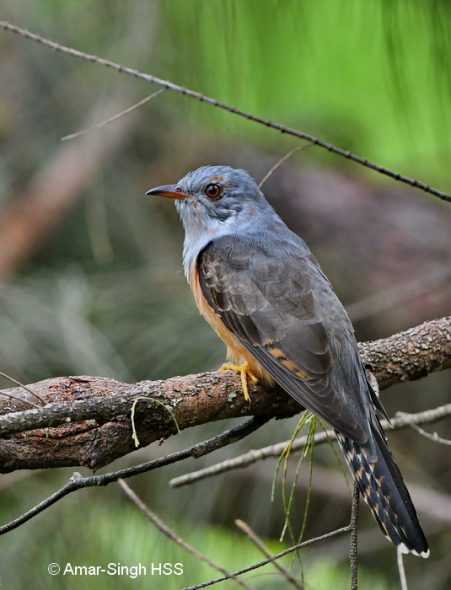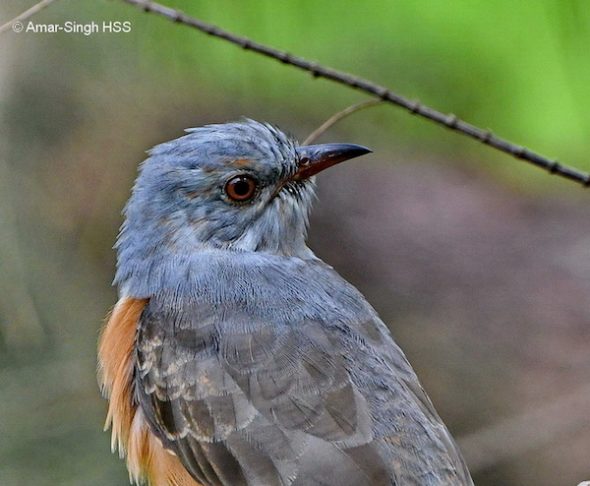
I have always been on the lookout for female Plaintive Cuckoos (Cacomantis merulinus threnodes) in grey morph. We are of course familiar with the female in the hepatic or rufous morph. Erritzøe, Mann & Brammer (2012) state that adult female grey morph look “like male but abdomen barred whitish and rectrices more barred”. It is not easy to find images of such adult females. Oriental Bird Images carries two images of one such bird (see below) but the differences are hard to appreciate. The editor of OBI comments “The brown cast to the wings and faint grey barring on the rufous breast indicate that this is a female”.

I saw this Plaintive Cuckoo that, at first glance, looks like an immature or subadult male. But on closer review the wings are browner and there may be some white fringes to the breast feathers (best seen on high resolution images). It is hard to be sure as there is moulting going on. It is still most likely an immature male but it got me thinking about adult females.

Surely adult females must at some time moult from the rufous (hepatic) morph to the grey morph and vice versa? Could some of the birds we label as immature/subadult males be actually adult females in transition?

Appreciate opinions from those who have some experience seeing these birds.
References:
- Cuckoos of the World, by Johannes Erritzøe, Clive F. Mann, Frederik P. Brammer and Richard A. Fuller. Helm, 2012.
- Oriental Bird Images
- http://orientalbirdimages.org/search.php?Bird_ID=439&Bird_Image_ID=71072
- http://orientalbirdimages.org/search.php?Bird_Image_ID=71071&Bird_ID=439&Bird_Family_ID=&Location=
Amar-Singh HSS (Dato’ Dr) – Ipoh, Perak, Malaysia
Location: Ipoh, Perak, Malaysia
Habitat: Semi-urban part of city
Date: 4th October 2019
Equipment: Nikon D500 SLR with Nikon AF-S Nikkor 500mm f/5.6E PF ED VR, handheld








